Your Guide to Enterprise Application Development
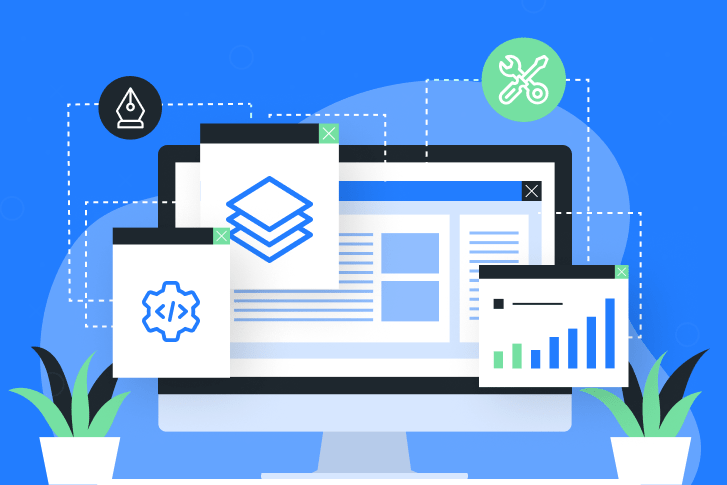
What Is an Enterprise Application?
An enterprise application, also known as enterprise software, is a system platform designed to smoothly operate all phases of a corporate environment in order to facilitate the coordination of workload and cooperation between departments, co-workers, etc.
Enterprise application definition is a large, complex, and scalable group of software systems shared within a business that can include different elements of an enterprise, such as human resources, finance, accounting, employee timesheets, and inventory management, among others. It helps businesses automate functionalities to minimize day-to-day challenges and, consequently, improves productivity and efficiency. It aims to deploy mobility in the long term.
What Is Enterprise Application Development?
To define enterprise development very broadly:
Enterprise development is the process of creating enterprise applications within a small, medium, or big organization. This process may require additional levels of security, such as applications meant to manipulate sensitive data.
Enterprise Application Development Market Size
Enterprise Web Application Development Market Size
The Asia Pacific market is expected to dominate the market of enterprise web application development due to the emergence of multiple small- and medium-sized companies in the region. Such countries include China, Japan, and South Korea.
In North America, the United States and Canada will be coming forward as well.
European countries such as Germany, the United Kingdom, France, and Benelux will be creating great competition too.
According to Emergen Research, the global web application development market is estimated to reach a value of $10.44 billion by 2027. A high digitalization is likely to drive the market for the forecasting years.
The same report reveals the leading industries of enterprise web application development are:
- Retail & E-commerce
- Media & Entertainment
- Real Estate
- Travel & Tourism
- Healthcare
- Education
Enterprise Mobile Application Development Market Size
Already one of the biggest markets globally, the enterprise mobile application development market size is prominently growing year after year. It has transformed into an easy solution to meet various organizational requirements, which doubled the global demand.
In 2019, in North America, the United States and Canada dominated the market with over 30% of the revenue share. It is now known as the biggest market for mobile app development due to the technological advancements and increased adoption of mobile devices in businesses.
However, Asia Pacific is expected to be the fastest-growing regional market, especially China and India, which offer wide opportunities across the mobile application ecosystem.
Countries from Europe are coming forward as well, especially the U.K., Germany, and France.
According to research data, the global mobile application market size was estimated at $154.04 billion in 2019 and was expected to reach $170.52 billion in 2020.
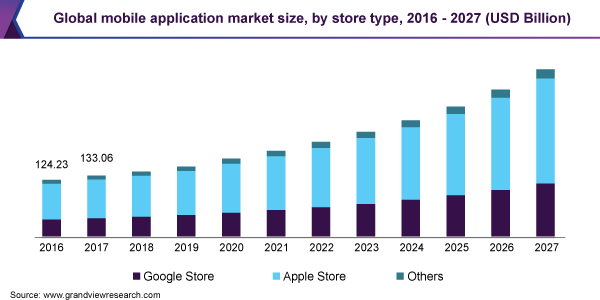
Statista reports more specific information about enterprise mobility management worldwide from 2017 to 2021.
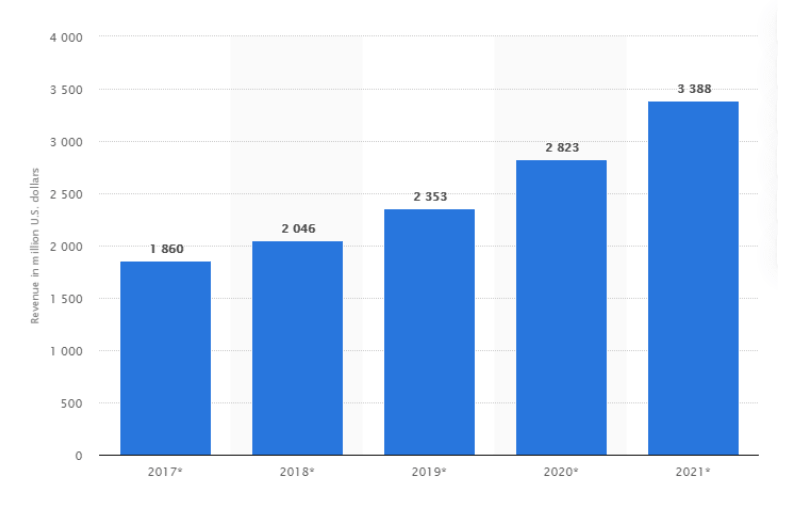
Another source reports that the intended audiences for enterprise mobile application development services include, but are not limited to:
- Technology Investors
- Research/Consultancy firms
- Technology Solution Providers
- Government Bodies
- Software Vendors
- Software Service Providers
- Mobile Application Development Platform Vendors
Technologies & Approach For Enterprise Application Development
Technologies Trending In Enterprise Development
IoT
The Internet of Things (IoT) is a system of global, linked physical devices that are connected to the internet, gather, and share data. Any computing object that can connect to the internet can be turned into an IoT device. In fact, there are now more connected devices in the world than there are people. The implementation of the IoT, in particular, creates immense value for businesses as it brings agility and effectiveness when it comes to access more information in order to obtain accurate insight to reach results.
Data Analytics
Data analytics investigates and processes a large amount of data to bring to light patterns, interactions, and other hidden insights. It helps businesses control and use data to establish new and smarter strategies, more productive operations, higher incomes, and more satisfied customers. Data analysis allows businesses to examine and evaluate data and get answers and insights almost immediately.
AI
Artificial Intelligence (AI) is a part of software engineering that builds smart machines capable of performing problem-solving tasks that require human intelligence. It means that computer programs can be adapted to automatically perform tasks without human help. The possibilities that such applications offer are endless. The implementation of AI in businesses and organizations is justified primarily by its many advantages, which include but are not limited to business process automation, better customer experience, data security improvement, staff training, predictive analytics, etc.
Cloud
86% of enterprises are implementing cloud-based tools, which have considerably increased in 2020, turning cloud-based tools into a crucial aspect in organizations reaching their business goals. It is a perfect variant that permits adapting to the needs of a business, obtaining an agile and rapid infrastructure when running workloads, and much more. Nowadays, enterprise software development in the cloud has become a trend, as it provides the possibility for a user to adopt technology without having deep knowledge or expertise.
DevOps
DevOps is a set of approaches, practices, and tools that aim to improve the organization's delivery of applications and services faster, using traditional software development and infrastructure management processes. It is a process that includes implementation, maintenance, security, and management of the back-end code of a software product, which is a much quicker process than the delivery of applications. DevOps ensures the constant stability of all the systems, which leads to the expected business results.
Blockchain
Blockchain in the company means the development of new financial technologies as it serves various purposes, such as the possibility of keeping track of physical assets, digital assets, tracking ownership, and increasing transaction speed, among others. One of the main reasons why enterprises implement blockchains is that it makes transactions transparent and decentralized, creating a database that ensures that all transactions are made and recorded correctly.
Augmented Reality
Augmented Reality (AR) recently became an effective business tool that helps companies deal with customers, suppliers, and employees when applied correctly. Although AR is not the most popular technology, it has a lot to offer to businesses. Indeed, it attracts wider audiences as it doesn't require additional devices, creates personalized content that increases engagement, makes user experience unforgettable, and much more. Long story short, augmented reality is considered very appealing to the market.
Approach For Enterprise App Development
Although traditional development methodologies have been at the top for decades, now, they are unable to fulfill all the demands of the newest enterprise applications. Despite all the benefits that traditional development brought, such tools are not enough for today's quick pace. Thus, modern enterprise software development aims to reduce application development timelines and is simultaneously able to produce all the aspects of web applications that are necessary for the modern enterprise. The modern approach for enterprise application development gained effectiveness in timeline, usage, functionality, and cost.
Agile Development
The Agile development methodology is the fastest and most effective process of turning a business need into a software solution while providing a flexible response to adapt. This methodology collects software development approaches that include constant planning, team collaboration, learning and improvement, evolutionary development, and early delivery. There are many Agile methods in Agile testing, including Scrum, Crystal Methodologies, Dynamic Software Development Method, Feature Driven Development, Lean Software Development, and Extreme Programming.
Continuous Integration
Continuous integration is a development practice that requires frequent code integration, preferably several times a day, to detect problems quickly. It is guided by numerable key principles, such as automated testing, revision control, build automation, and automate deployment, among others. Continuous integration benefits organizations by building a solid foundation, increasing visibility, catching errors early, and reducing integration problems. This allows companies to produce software faster and to eliminate the doubt as to whether or not the code is going to work in the end.
Incremental Development
Incremental development is a method that requires breaking down the software development cycle into multiple standalone modules. Each module has to go through the requirements, design, implementation, testing/verification, and maintenance phases. By using the incremental development approach, organizations quickly obtain working software, and during the software life cycle, can find simplicity in testing and detecting errors, initial delivery cost reduction, and flexibility in changing requirements and scopes, among others.
Rapid Application Development
Rapid Application Development (RAD) is a software development methodology that engages tools, techniques, and strategies that aim to speed up the development process and obtain faster feedback from the product users. Its overall cycle includes such steps as prototyping and modeling, architecture and design, development, testing, and release. RAD ensures complete correspondence between the app’s conception and the final product, meeting the business’ needs and requirements.
Spiral Development
The spiral model emphasizes risk analysis. A software project has to pass four phases repeatedly: planning, risk analysis, engineering, and evaluation. The advantages of the spiral development approach include risk reduction, strong and documentation control, the possibility to add more functionalities later, and the fact that the software is produced at an early stage of the software life cycle.
Waterfall Development
Waterfall development is a model that requires the full completion of each phase before the beginning of the next one. It was the first development approach to be introduced. With this model, when a phase is finished, it has to be reviewed to check whether or not the project can be continued and move on to the next phase, as they can never overlap. The advantages of the waterfall development approach include the simplicity of use and the ease in management, as phases are completed one at a time. It is perfect for projects for which the needs and requirements are clearly defined and well-understood.
Technology Stack for Enterprise Application Development
Before developing an enterprise application, it is of high importance to choose a correct technology stack, which refers to the most effective combination of client-side and server-side technologies, known as back end and front end. Usually, a technology stack consists of layers of components that participate in building software applications and solutions.
Nowadays, there is a rich choice of technology stacks in enterprise development, so it is easy to get confused. Here is a list of factors you should consider when choosing a tech stack.
- Type and size of the project
- Developers´ knowledge and expertise
- Project's timeline or Time to Market (TTM)
- Scalability
- Maintainability
Different programming languages and frameworks work for a certain purpose and have a target audience, so it is important to carry the technology stack selection based specifically on your project and its goals. Below are the back-end and front-end technology stacks we recommend using for enterprise application development.
Back-end Enterprise Technology Stack
- Java
Java is one of the oldest enterprise application development trends that is still used and supported. It has been on the market for over 20 years, which left more than enough time to create an innumerable number of enterprise software. Moreover, it offers many available tools and libraries that simplify the work of developers, which may be the reason for its huge community. Having proven its great work, Java will not go anywhere for a long time.
- PHP
PHP, alongside Java, has been dominating the implementation of enterprise applications for years. PHP has the largest community of developers as it is a very functional and simple language. Enterprises have been powering huge platforms such as Facebook, Vimeo, and WordPress with PHP application development as it responds to all business needs. Its architecture supports robust solutions, including scalability, development speed, cost-effectiveness, and support, among others.
- C#
C# is known as the most beloved programming language among developers. It was developed by Microsoft as a part of its .NET initiative and later approved internationally. Now, C# is supported by Windows, Linux, and macOS. Due to its high performance, scalability, architecture, security, and other features, C# is gaining popularity in enterprise application development and becoming an important competitor of Java.
- Go
Initially created at Google to address maintenance, scalability, and performance issues, the Go programming language became open-source in 2009. As it adopts simplicity and efficiency, leading companies, such as Uber and Netflix, have embraced it as a central part of their technology stack. Go offers exceptional benefits to developers in terms of productivity, high performance, and flexibility in order to solve modern business challenges. Being a relatively young language, Go has proven maturity for enterprise application development by proving the simplicity of building adequate software.
Front-end Enterprise Technology Stack
| Native Apps | Hybrid Apps | Progressive Web Apps | |
|
PROS |
|
|
|
| CONS |
|
|
|
Enterprise Application Security
Enterprise application security refers to the protection of apps from external attacks and data theft. In fact, enterprise applications are the number one target for attacks. However, many companies choose not to adopt application security best practices to protect their software, data, and users. Security should be implemented at many levels of an application to ensure a minimal level of assessment.
One of the most important security practices is to integrate testing into the process of software development that consists of vulnerability tests and deep assessments. Let's have a look at the security levels of enterprise applications.
Defending Threats on the Browser Side
- HTTPS
- XSS protection
Defending Threats on the Server Side
Application
- SSI protection
- XSS protection
- Content validation
- Infrastructure
- WAF
- Microservices Architecture
- Network FireWall for ingress and outgoing connections
Architecture
- Centralized security
- Restricted and encrypted access to API
- Authentication all connections
Backups
- Develop backup system
- Protect all backups with encryption
- Testing backups
Monitoring
- Process monitoring
- Application monitoring
- Develop metrics for application
- Alert management system
- Develop log storing process
Incident Response
- Develop an incident management system
- Secure Development Considerations
- Developing Integration and Delivery process
- Developing local/dev/staging/production environments
- Automate deployment process
Advantages & Disadvantages of Enterprise Application Development
So, what are the reasons for such fast-growing popularity of enterprise application development within businesses? Without a doubt, it has to do with the multiple advantages that it brings to facilitate effective performance within companies. However, we should always contemplate the other side of the coin. All the benefits go hand in hand with several challenges that should be considered when implementing enterprise application development into your business processes. Let's take a look at the most widespread and most significant advantages and disadvantages of enterprise technology.
The Advantages of Enterprise Application Development
As previously discussed, one of the key advantages of enterprise application development is the automation of day-to-day operations within a company's workflow. Such changes in the routine create space for employees to focus their efforts on more crucial tasks. To look at the bigger picture, workers’ overall productivity grows as they take off their shoulders the tasks that frustrate them.
Moreover, enterprise applications offer the possibility to learn more about your business by getting insight into your employees’ performance and behavior. You can monitor the current stage of a certain task as every user’s interactions will be recorded. Nowadays, it is the best way to control any company and make it much more productive.
This real-time data will provide you accuracy in all the company’s processes and bring immense value when implementing your next business strategies. In addition, businesses become much more agile and rapid in adapting and responding to issues as they are able to make accurate analyses and predictions.
The implementation of enterprise technology also helps reduce expenses within the companies. There is no need to get rid of former software, instead, new and old technologies get integrated into powerful and custom enterprise software. Moreover, there is always a possibility to integrate more solutions internally and externally, which, in the long run, creates huge cost reduction for businesses.
Overall, the advantages of enterprise application development may include:
- Simplified business processes
- Better business control and monitoring
- Accurate insights and analysis into your business and areas that require improvements
- Better connection between employees and information exchange
- Reduced costs and investments
- Better adaptation and responsiveness to issues
- Better business flexibility
What Are the Challenges of Enterprise Application Development?
Although enterprise technology brings many benefits, it also entails various difficulties that you should know about in order to successfully overcome them. Let's have a closer look at the most common challenges that a business may face during the development and implementation of enterprise technology.
The need for a rapid adaptation
As the business environment is changing rapidly, get prepared to respond instantly to issues in the midair when developing and implementing software. Besides, business requirements change over time, so based on the predictions and analyses of your company’s performance, you might have to prepare for some failure. The best advice we can give you is to initially develop customizable solutions that will quickly adapt to any changes that your business could possibly face.
Employees’ engagement
Before enjoying all the benefits of enterprise software, employees have to get accustomed to the new technology, which may be difficult. It will indeed require some time to learn the application and how to use it to the fullest. However, the best thing to do is be patient and give them time to overcome frustration. In the beginning, put your employees above your business goals, and you will see how fast they start engaging with the app and give you the results you expect. Some enterprise app development services include employee training, which is a good option to consider.
Return on investment
Every company expects its investments in enterprise applications to provide results as soon as possible. Our best advice is to identify Key Performance Indicators (KPIs) that adjust with your business goals and requirements. Only after that will you be able to accurately analyze the effectiveness of your enterprise app and accurately predict your next solutions.
The need for the quality support
The income and efficiency of a business take a hit when an enterprise application doesn't perform well, even for a few minutes. Such difficulties may be avoided if a business has a permanent team of specialists. Nobody will know your enterprise application better than its creator, therefore, no one will be as good at its maintenance. Our best advice is to find the perfect enterprise software development company for you, that will take care of all the necessary levels of your enterprise app.
Step-By-Step Enterprise Application Development Process
Enterprise software development is a very complex process as it should involve all the functionalities required to simplify business processes and solve problems across the organization. To do so, it is crucial to comprehend all the needs of an enterprise, inside out. That is the reason why enterprise application development requires detailed planning and includes extensive phases. Here are the essential stages of the development process to consider.
1. Create an App Like your Product
First things first, to start planning your software product, it is essential to consider the overall strategy and goals that are expected to be reached by creating an enterprise application. How exactly is the app supposed to simplify the day-to-day performance of your workers? What type of insights do you expect to get from it? Once you have the answers to these questions, the development team will determine all the necessary functionalities.
2. App Design
When the code functionalities are determined and approved, an enterprise app development company will construct a design plan. One of the crucial points at this stage is to involve your employees in the mobility to make the design as comfortable as it can be.
3. App Development
Once the design process is completed, developers will start writing code that was approved during the design stage. The code will meet the requirements of your software while considering the users’ needs.
4. App Integration
The integration will keep your enterprise’s platform moving forward. This step includes the complete integration of the new software with your existing one and/or third-party software systems and subsystems, which will improve the performance of your technological infrastructure.
5. App Adoption
This step is crucial in order to deliver software that adapts to its users’ needs. It involves the continuous perfection of the design of an application. To successfully complete the adoption phase, it is advisable to keep in touch with the user throughout the process and provide training to help them get acquainted with the software faster.
6. App Scalability
The scalability of an enterprise application is crucial. This step consists of improving your application to the point where it reflects the ability to evolve according to the user's demands. Any software should be configured for scalability and making it a priority will definitely reduce maintenance costs, create higher agility, and improve user experience.
7. After-launch Support
Make sure the enterprise application development services you choose for this project include after-launch support. As discussed above, nobody will know your enterprise application better than its creator, so no one will be as good at them to take care of its maintenance. This step involves that your software team quickly solves any problems or challenges and constantly supports you.
Custom Enterprise Application Development
Custom enterprise application development depends on the needs of a particular business. So, after a detailed analysis, you should implement a tailored solution. There two main types of enterprise applications: enterprise web apps and enterprise mobile apps. Companies decide what kind of apps they need to implement according to the business's requirements, as it affects the app's design and user experience since they are two different products.
Enterprise Web Applications
What is an enterprise web application? It allows you to control and record the internal and external processes of a company. There is no need to download nor install them and they work across multiple platforms. Enterprise web application development is not native to devices, so web apps do not have access to GPS, camera, contacts, etc. However, they can be confused with mobile apps because they can be highly responsive and provide a similar user experience.
Enterprise Mobile Applications
Enterprise mobile applications are platform-specific, which means that their designs differ according to the mobile operating systems (iOS or Android). They have to be downloaded and installed through the App Store or Google Play. Although not systematic, they may have restricted access to the internal tools of a device, such as the contacts, GPS, or camera.
Enterprise Desktop Applications
The basic distinction of enterprise desktop applications is that they have to be installed and updated separately on each computer. They are confined to a physical location, so to use these apps on your computer, they always have to be within reach. Enterprise desktop applications are standalone in nature, so they don’t rely on an internet connection.
Enterprise Application Development Cost
Enterprise application development is a complex process, so its cost depends on multiple factors. In general, the particular app idea, with all the business and functional requirements, will influence the app’s development cost. However, you should also consider some other factors, such as the:
- Software size and complexity
- Development timescale
- Back-end infrastructure
- The complexity of UI and UX design
- Number of app features
- Additional branded visual elements
- Development approach
- Number of platforms to be developed
- Outside software implementation
- Training
According to multiple sources and surveys, the price range for building enterprise software falls somewhere between $50,000 and $750,000. Obviously, it is a significant investment, but implement adequate custom software tailored to your business needs will pay off quickly.
Choosing an Enterprise Application Development Agency
Finding the perfect enterprise application development company for you is not an easy task. However, putting effort into the search will greatly benefit your software project. Many platforms may help you with your search, such as Clutch, G2, GoodFirms, ITFirms, SoftwareSuggest, or Business of Apps, among many others. They provide business software and services reviews based on users’ ratings and social data that may give an insight into companies you will get interested in.
A good agency will care about your success as much as they care about their own. So, before jumping on the first one you come across, it is very much advisable to weigh in your options and count all the red flags. Here are some tips to follow when choosing an enterprise application development agency.
Analyze Previous App Development Projects
To know whether an agency can deal with your requirements or not, you should ask them about their previous development projects. A good enterprise development company will have proven expertise in the creation of such projects, which you can use as examples to analyze their abilities. Try to pay attention to the challenges of every case to see how the firm’s team solved them and whether or not such an approach will work for your project. At the end of the day, app development should provide you with a return on investment.
Analyze Work Approach
Analyzing an agency's approach to development will give you an insight into how they will work with you. First, discuss with them what they are going to take into consideration when beginning working on your app. A good development company will always start with defining your business strategy, understanding your needs and requirements, and setting goals. They should help you understand what value the app will bring to your specific type of company and mention all the benefits and challenges that may arise.
Check Whether They Completely Understand Your Business Requirements
If you do not want to lose the context of your business, then you should pay attention to whether or not the agency is interested in studying the specifics of your case before developing the app. It would be a mistake if you let them start creating an app before discussing every detail that you may be concerned about.
Analyze How They Charge For Each Factor
Enterprise app development is an expensive process because many factors and variables are involved. A good development agency will be able to explain how they charge every factor, and why they do so. Moreover, they will provide you with structured pricing that will give you insight not only into the cost but also into the time required, which will help you make the most out of your budget.
Conclusion
All in all, based on the information discussed above, it would be fair to conclude that enterprise application development is undoubtedly on the rise. The way companies are operating now has drastically changed over the last decade, so investing in enterprise software is a must for successful business performance.
This guide includes all the factors you should consider if you want to implement enterprise software into your business, beginning with enterprise application definition, its components, market size, technology, and approaches, and ending with the most valuable tips to choose the right enterprise development agency.
However, always remember that before putting your enterprise development idea into practice, you should conduct a detailed business analysis to measure the risks, set goals, and identify requirements. Once you have done this and followed the steps of this guide, rest assured to be standing on the path of a successful enterprise application launch.


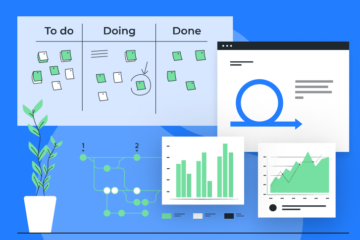
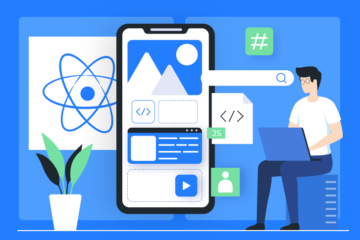
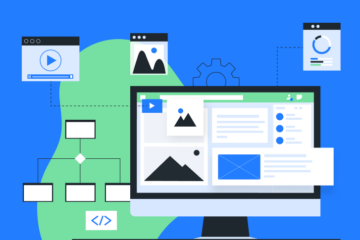
No comments